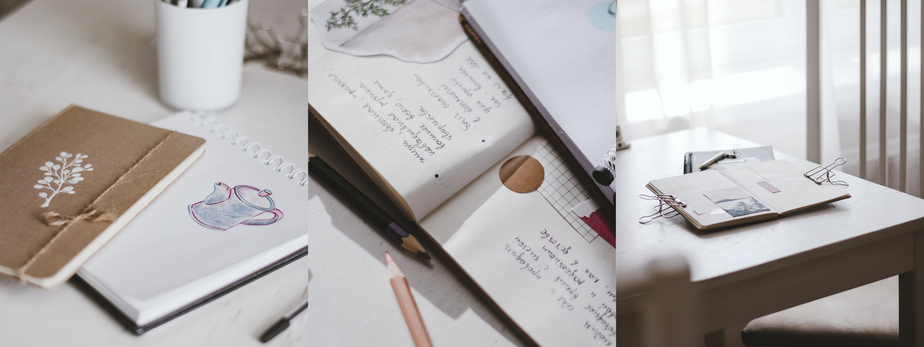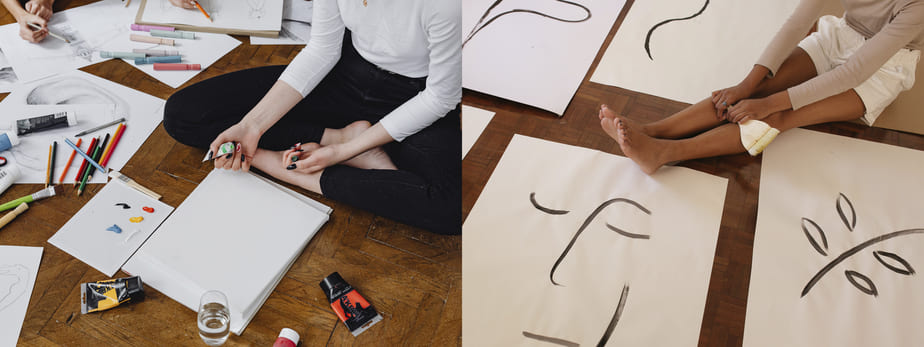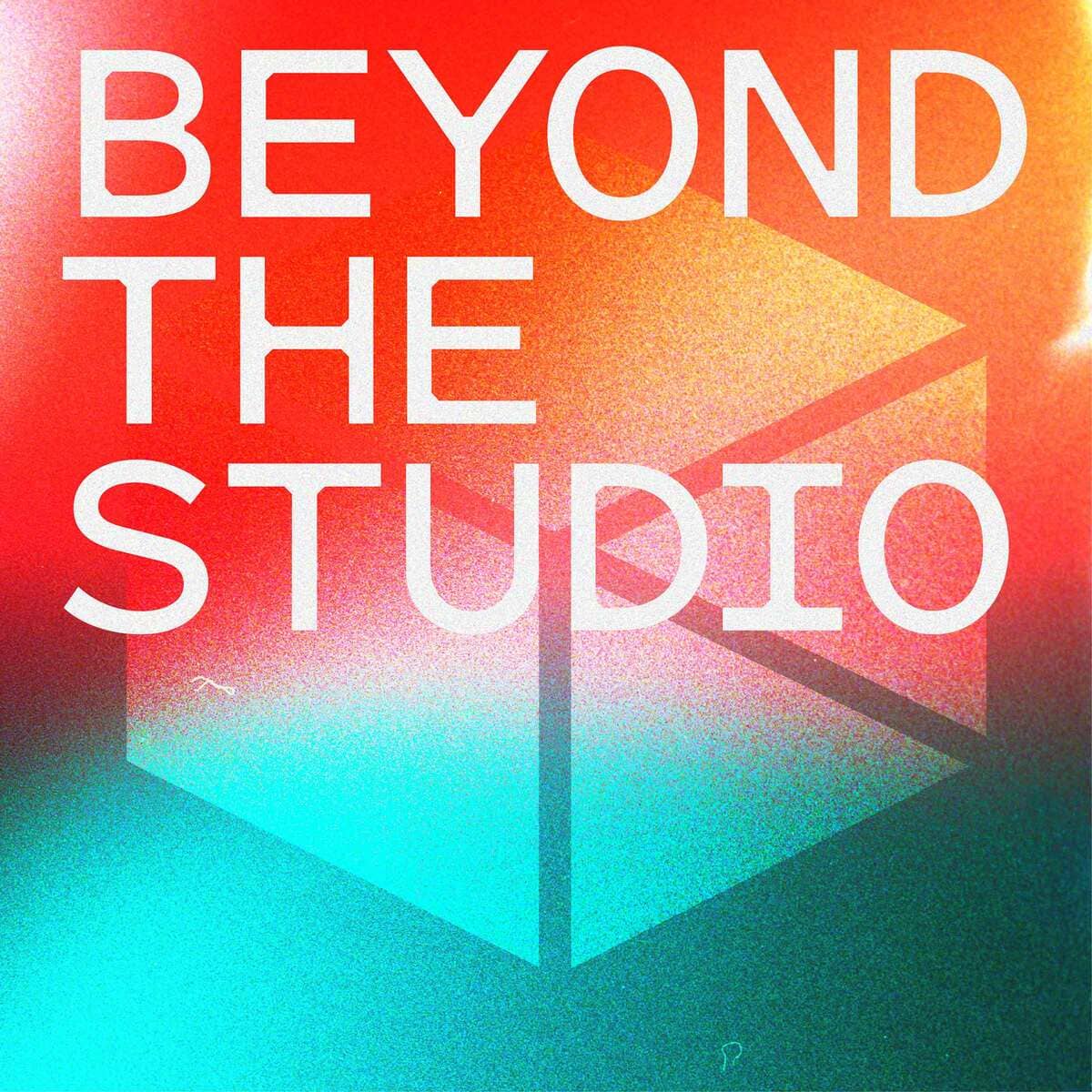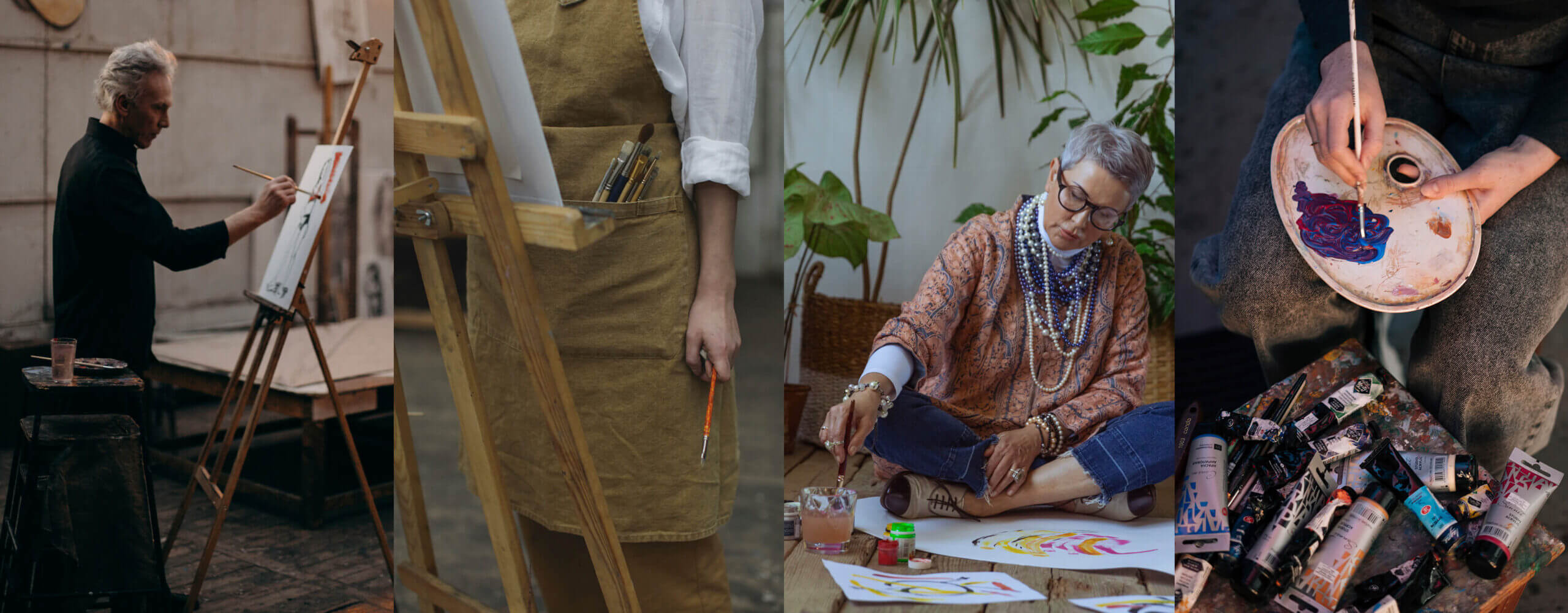Journaling is more than a hot trend. Historically, people have turned to the daily practice of keeping track of their thoughts and ideas in a notebook. Some of the world’s most influential literary works started up as diaries, and the art world is no exception. An Art Journal is the safe place where many artworks begin.
If you are looking for a new way to spark up your creativity, keep track of your artistic pulse, or even keep you in a constant state of exploration and experimentation, starting an art journal is a good practice. Follow this guide to begin your own Art Journal fit to your creative needs.
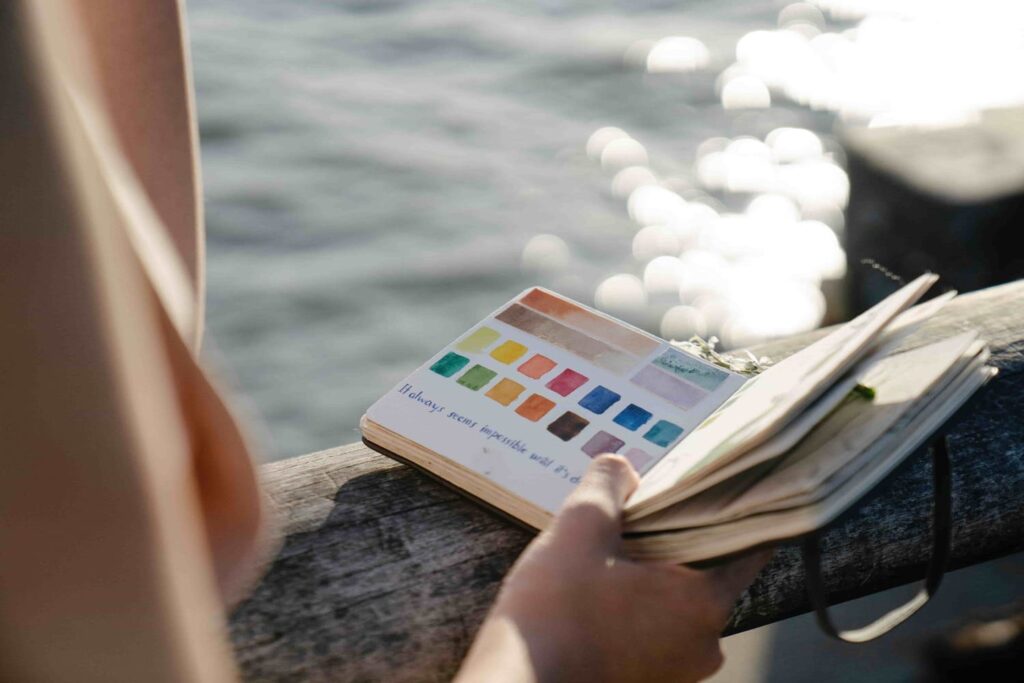
An Art Journal can take many forms depending on their creator’s goal.
Contents
What is an Art Journal
By definition, a journal is a notebook that compiles personal recollections of events, experiences, and thoughts, during a certain period of time and under a certain context or concept. Art Journaling takes this idea and proposes it as a way to capture an artist’s creative process.
But Art Journaling has a free-form approach. In a single journal different themes, techniques, media, and formats can be mixed. The intention is not only to register a process, but to stimulate creativity, and turn this process into a habit.
An Art Journal is also an excuse to create just for the sake of creating. Results don’t matter, the real value stands in coming back to face the blank page. Yet, the results can be seen as single artworks or even as a whole concept piece. The concept of Art Journals and Artist’s books can overlap. Is all a matter of what the creator aims to achieve with this personal log.
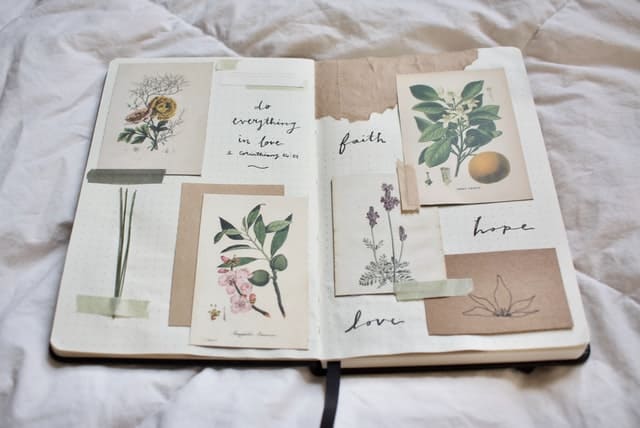
An Art Journal can stimulate creativity and experimentation.
Benefits of starting an art journal
Art Journaling can take many forms. This practice works around your desire of making a habit out of keeping track of the different ways you can express yourself. It’s a personal space free from any rules and that’s fertile ground for creativity.
For an artist, an Art Journal can be the place to ease their mind and bring the smallest ideas to life while working on bigger projects. For some people, this is a safe space to try new things without thinking about achieving “perfect” results. Others see it as a way to capture the feel of certain life periods or to track their evolution as creators.
Keeping an Art Journal is a good way to see how your creative mind works, how you develop interests in certain topics, and how some ideas are generated. For some, this expectation-free creative space might even be a way to process emotions and complex situations.
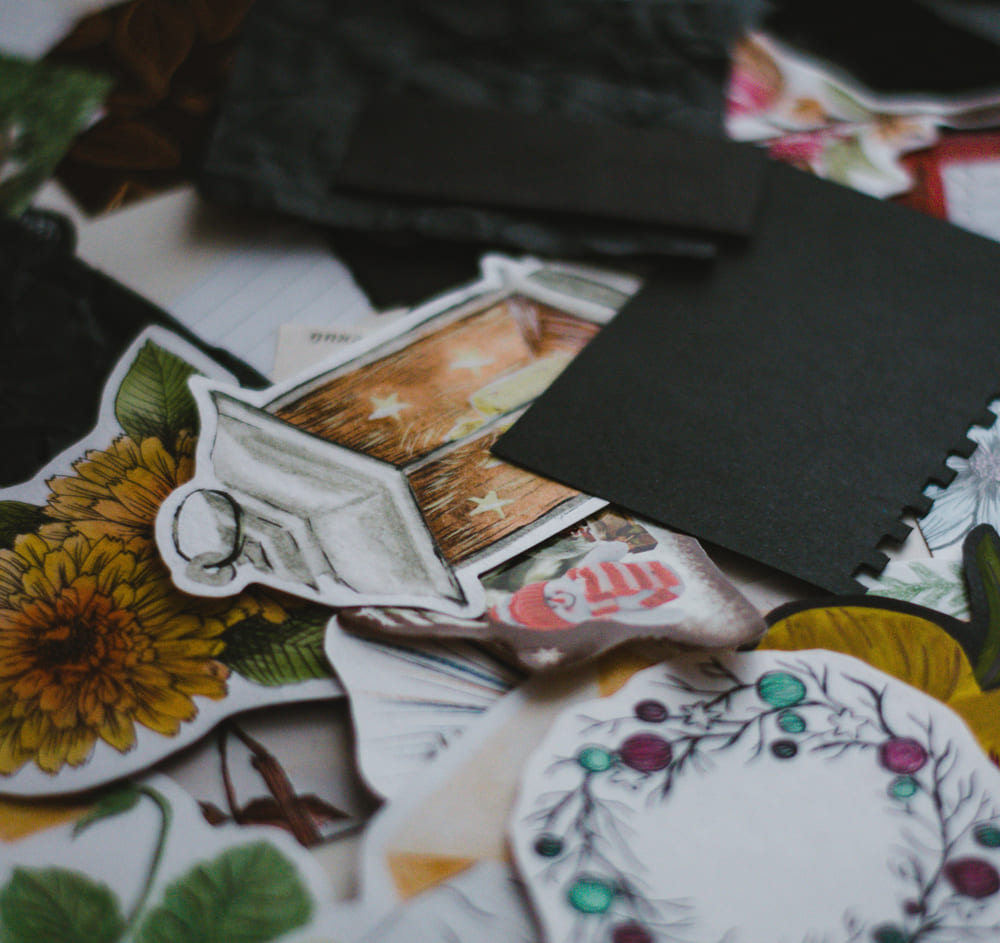
The tools and supplies needed to keep an Art Journal depend on how you want to fill each page.
Artist’s tools and supplies for art journaling
Each Art Journal is as unique as the creative process of the artist behind it. And if we take a detailed look at most journals, patterns might pop up, but each page tends to be unique. That’s why there is not a fixed set of artist’s tools or supplies needed to begin an art journal, just a few essentials and then, any tool required to capture your ideas.
This is a list of essentials to start with:
-Graphite and colored pencils.
-Pens with different tips, strokes, sizes, and colors.
-Markers, crayons, and pastels.
-Brushes.
-Masking tape.
-Washi tape.
-Cut-outs for collages.
-Paint: watercolor, acrylic, etc.
-Ephemera: pieces of personal memorabilia like concert tickets, photographs, and others.
-Glue and adhesive tape for mixed media pages.
-Stencils, stamps, and stickers.
-Paper sheets.
And of course, the essential that holds this creative exercise together: a journal. Take into account the size according to the type or portability and usability you want. Choosing the type of pages is essential, not only because of the format (blank, lines, dotted) but because of the type of paper. Acid-free paper journals are ideal if you want to fill a log that will stand the pass of time.
How to start an Art Journal
The first step to begin an Art Journal is accepting that “anything goes”. Having full creative freedom can be a bit overwhelming but the key to this medium is playing with it and really letting yourself be. This is your journal, you are both the creator and the audience.
There is no artistic ideal to achieve, just work your way through each page in the way you feel like it. The only thing you really need to start your art journal is to take a pen, draw the first line, write a word or phrase, paste the first piece of a collage, drop a splash of paint, or whatever comes to mind. Then you just need to keep going and coming back to your journal.
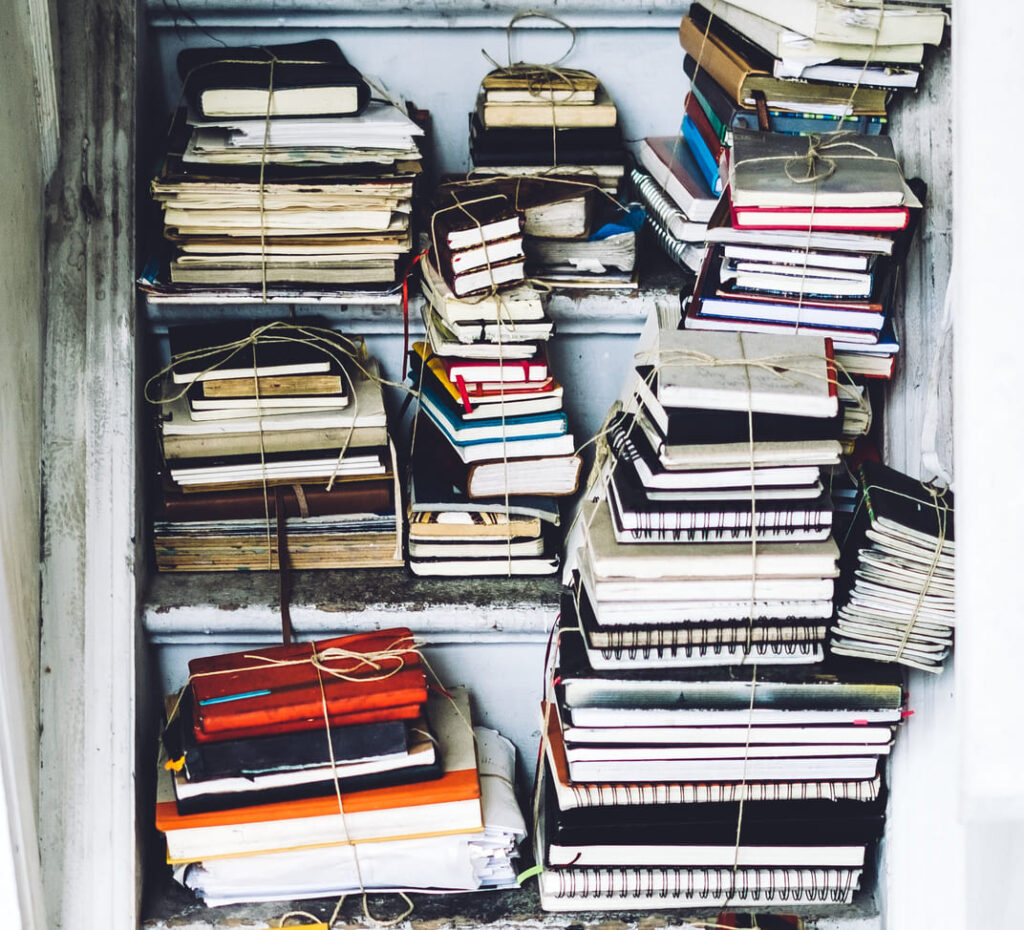
From a sketch journal to a personal log and planner, art journals can have many themes and functionalities.
Types of Art Journals for creators
By concept Art Journals are not only open to mixed media work, but mixed themes, ideas, and goals. The same notebook used for planning activities can be a travel log, a creative exercise journal, and a time capsule of a certain creative period in an artist’s life.
These are a few of the most common Art Journal types, and the best part is you can have a journal for each or mix them all:
-An index of your artworks.
-Idea bank.
-Planner.
-Bullet journal.
-Project journal.
-One line a day: your daily life summed up in a phrase.
-Inspiration.
-Brain dump: a notebook to unleash everything that’s on your mind.
-Logbook: record your actions in list form.
-List: of facts, milestones, everything you can think of.
-Morning pages: draw, sketch, or write 3 pages every morning.
-Travel.
-Practice: lettering, patterns, or types of strokes.
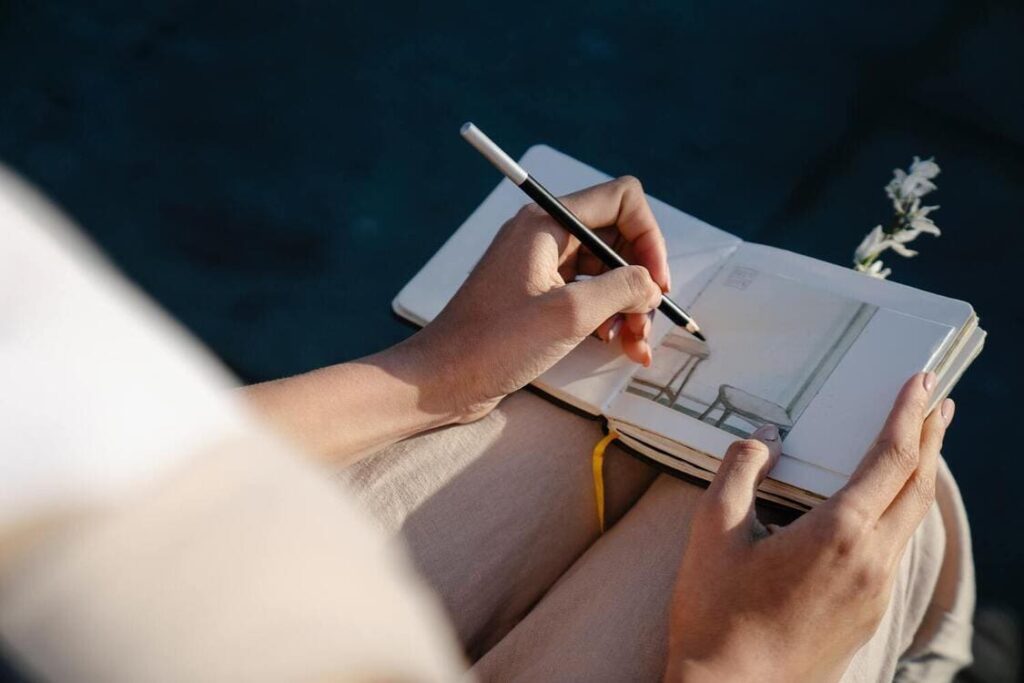
A good way to start your art journal is to establish a set of prompts and guidelines to follow.
Prompts to fill an Art Journal
When it comes to art journaling the biggest step is coming back every day to face a blank page and fill it. Art Journaling prompts are a good way to keep you on track and coming back to your journal even on days when it feels like your creativity is not up for the test.
If you are looking for ideas to fill your Art Journal follow this guide of prompts to follow on your first 21 days of journaling:
- Capture a texture of the space around you
- Draw a feeling
- Fill a page with different lines and brush strokes
- Tell a story without using words
- Illustrate your current most listened song
- Draw a memory
- Create a collage
- Fill a page with doodles
- Illustrate your favorite things
- Fill a page around your favorite ephemera
- Make a list
- Make a color palette that reflects your mood
- Self-portrait
- Theme: most used medium
- How your inbox looks like
- Theme: blockage
- Draw the same thing over and over
- Vision board of your creative space
- Draw your surroundings
- Create a cover for your favorite album
- Fill a page with patterns
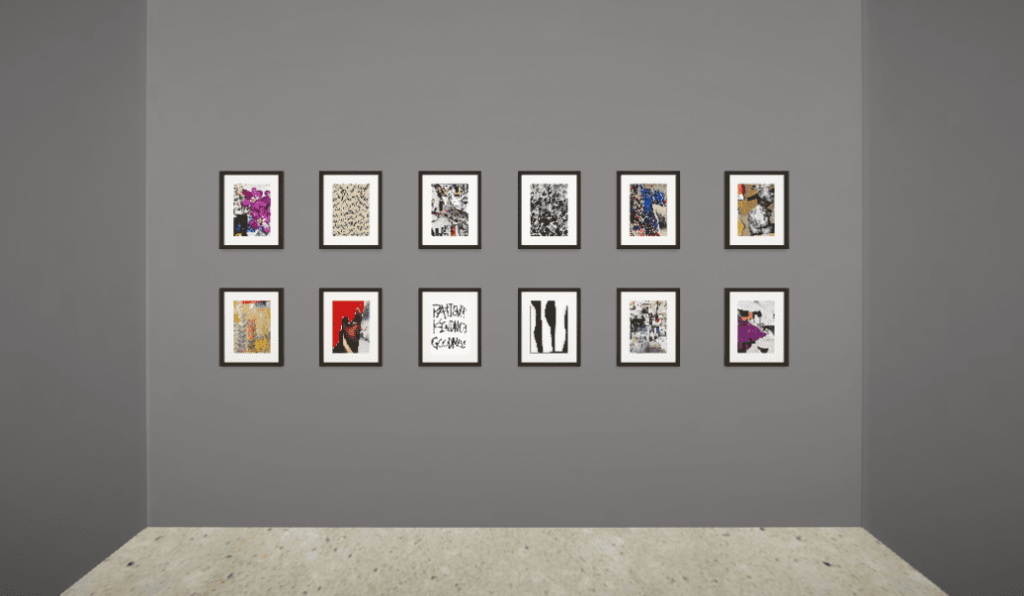
Sharing parts of your Art Journal can be a way to develop a relationship with people interested in your artworks.
What to do with your art journal: sharing your process
Traditionally, most journals are kept personal. Art Journals are not created inside any set of specific rules and are open to being shared in many ways. Interacting with a creator’s Art Journal is a well-rounded experience that shares new light on their creative process.
Creating a 3D Virtual Gallery of your art journal can be a fun way to open a window into your train of thought and creative practice. You can digitalize or take good-quality pictures of each page and with a few clicks create an art show with the help of ArtPlacer’s Virtual Exhibitions feature. Each page of your Art Journal can be seen as a single artwork to be digitally framed and shared in a digital customizable gallery that art lovers can navigate.
The customization options that come along with the Virtual Exhibition format can bring the pages of any Art Journal to life and turn them into an experience for art lovers, collectors, colleagues, people looking for inspiration, and anyone interested in understanding the train of thought behind your artistic work.
There is no specific time to start an art journal, you just need the motivation or even the curiosity to follow through with a creative project that can grow with and around your ideas. What would be on the first page of your Art Journal? Figure it out and face the blank page.
